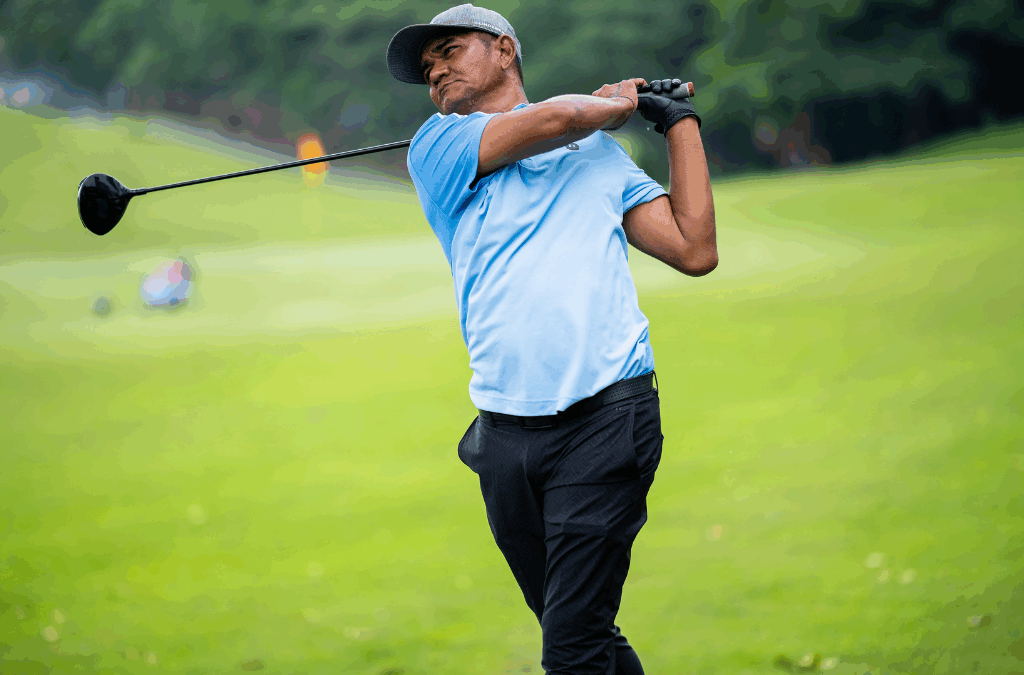Key Takeaways:
- Golfer’s Elbow comes from repeated wrist-flexing actions and can strike anyone, not only golfers.
- Warning signs include inner-elbow ache, forearm fatigue, grip weakness, and morning stiffness that worsen without rest.
- Persistent pain often improves with expert care, physical therapy, shockwave, PRP, or stem cell treatments available at Avid Sports Medicine.
Teeing off should feel like freedom, yet if a nagging ache creeps into your swing, it’s hard not to wince at every follow-through. That pinch on the inside of your elbow is known as Golfer’s Elbow (medial epicondylitis), its inflamed tendons throwing a wrench into both your round and your day-to-day life.
But Golfer’s Elbow is not just for golfers. We’ve all felt that tell-tale twinge somewhere in the arm after a long day of repeats, whether it’s hauling grocery bags, hammering nails, or yes, swinging a nine-iron. Most shrug it off, chalking it up to “just a strain.” But if the ache sits on the inside of your elbow and refuses to leave, there’s a good chance you’re facing Golfer’s Elbow, even if you’ve never stepped onto a tee box.
What is Golfer’s Elbow
Golfer’s Elbow, medically known as medial epicondylitis, comes from irritated tendons attaching the forearm muscles to the bony knob on the inner elbow. Those same tendons flex your wrist and help you grip life’s little necessities: coffee mugs, steering wheels, dog leashes. You don’t need to keep score on a golf card to bogey those tendons.
How Regular Life Stacks the Odds
We all know everyday routines can pile up stress, whether it’s deadlines at the office or dishes in the sink. Your tendons feel a similar build-up when movements repeat without rest. Consider a handful of unsuspecting culprits:
- Garden duty. Pruning, digging, and twisting hoses put your wrist through a workout you didn’t plan.
- DIY weekends. Swinging a hammer or rolling gallons of paint keeps your forearm on a loop.
- Cutting and cooking. Rock-chopping a mound of veggies? That’s a feast for the elbow, too.
- Keyboard marathons. Clicking a mouse or tapping keys eight hours straight turns micro-motions into macro-trouble.
- Crafts and hobbies. Knitting, throwing pottery, or playing guitar: small joys, big demands on tiny fibers.
Each time your wrist curls toward your palm, tendons tug on the same origin point. They heal slowly, like patching a pothole only to drive over it again before the asphalt sets. Eventually, soreness settles in.
Symptoms of Golfer’s Elbow
How do you know it’s more than just a temporary ache? Watch for:
- Inner-elbow ache. It may burn, pulse, or feel tender when pressed.
- Forearm fatigue. Simple tasks, picking up a gallon of milk, feel oddly heavy.
- Weak grip. Shaking hands seems fine until halfway through the squeeze.
- Tingling. Occasionally the ring and little fingers go fizzy, like they touched a mild battery.
Morning stiffness is another giveaway. If you wake up and need a mini warm-up before turning a doorknob, take note. The longer these signs linger, the tougher they become to hush.
Who’s at Risk?
You don’t have to be a top athlete to develop this condition. A few factors can increase the odds:
- Age: As tendons age, they become less flexible and more prone to small tears.
- Occupation or hobbies: Jobs or pastimes that involve repetitive gripping, think kitchen work, assembly lines, or crafting, can wear down those tendons.
- Health conditions: People with diabetes or arthritis may heal more slowly.
Even the tools you use matter. A paint roller with a thin handle or a cheap garden trowel can force your wrist into awkward positions, adding stress where you don’t need it.
Ways to Prevent Golfer’s Elbow
A few simple tweaks can go a long way:
- Warm-up, not wind-up. Before yard work or racquetball, roll your wrists and tug fingertips gently backward and forward. It takes sixty seconds and saves weeks of grief.
- Break the loop. Follow the “30-30 rule”: after thirty minutes of the same motion, pause for thirty seconds. Shake out your hands or stretch the forearms.
- Gear audit. Pick tools with cushioned, thicker handles. Replace an over-stiff golf shaft or racquet string tension.
- Strength before length. Light dumbbell wrist curls, palm up and palm down, make tendons resilient. Keep weights low; focus on smooth control.
- Ice after effort. Ten minutes of cold at night calms inflammation brewing beneath the surface.
When to Seek Professional Care
If symptoms persist beyond two weeks or significantly impair daily activities, professional evaluation becomes important. A qualified provider can confirm the diagnosis, rule out other conditions (such as ligament sprains or nerve entrapments), and develop a targeted treatment plan.
Treatment Options
Physical Therapy & Athletic Training: A trained specialist will guide you through targeted exercises, especially eccentric wrist-flexor work, that gradually rebuild strength.
EPAT/Shockwave Therapy: High-energy acoustic waves target the affected tendons, stimulating neovascularization and accelerating tissue repair. Many patients report reduced pain and improved function within a few sessions.
Regenerative Medicine
- Platelet-Rich Plasma (PRP): Your own blood, super-charged to promote healing.
- Stem Cell Therapy: Borrowed from bone marrow, it targets damaged areas with cellular repair.
Sports Massage: Adjustments and myofascial release tackle stubborn knots and restore joint motion, kind of like resetting a jammed zipper.
Every option has pros and cons, costs and schedules. The best plan fits your lifestyle, pain level, and patience.
Remember healing isn’t a straight-line sprint. It’s more like walking a hilly trail: some days feel great; others require pacing. A bit of grace toward yourself and the process pays off in the long run.
Ready to Swing Again?
Golfer’s elbow may have snuck up on you, but it doesn’t have to keep you benched. By spotting the warning signs early, adjusting how you work and play, and choosing the right treatment, you’ll be back to lifting, swinging, and living without that nagging pain.
If you’re dealing with persistent elbow pain and want a personalized recovery plan, book an appointment with the team at Avid Sports Medicine. We’ll help you hit your peak performance, on the course or off. Schedule your visit today!

